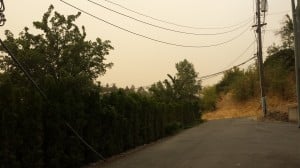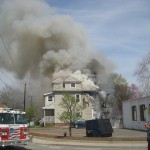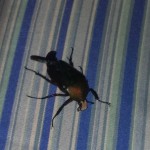A few weeks ago, I saw this video on my Twitter feed. At first, I was excited to see something that would talk about the way that our biases leak into our math, but instead I was annoyed to find that the video actually showed the opposite problem. What I see in this video is a tendency toward the sort of reductionism that gets in the way of broader understanding.
We have a woman who studied philosophy in college and was politically active at the time. Now she’s a bank teller. Someone says that not only is she a bank teller, she’s also a feminist activist. Is it more likely that she’s just a bank teller? Or is it more likely that she is both a bank teller and a feminist activist?
This video tells us that it’s more likely that she’s just a bank teller. The reasoning behind this is that in the set of all bank tellers, there are very few who are also feminist activists. Therefore, the likelihood that this woman is both of these things is very low. But they’ve missed something vital! They have completely ignored the fact that we know that she studied philosophy and was politically active in college.
In the video, they explain that this is irrelevant information; those points just confuse you. In fact, I believe that this is key information. If we were to take the set of all women who studied philosophy and were politically active in college, we would find a large number of those who have continued to be politically active in their lives after college. There is also some sociological data that suggests that women are more likely to become active in feminism as they get older. [1] [2] Taking those two things into consideration, we might consider that the set of people we are looking at to determine the likelihood of this woman’s activitism is not the set of “bank tellers” but rather the set of “bank tellers who studied philosophy and were engaged in political activism in college”. We might also add into that “who are older than 22” since we know that she is not in college any more. This makes her far more likely to be a feminist activist as well as a bank teller.
To put this all another way, the question of probability is affected by the number of variables we take into consideration.
One of the limitations of scientific research is that we can only look at so many variables at once. In order to understand things, we need to simplify them, remove as many variables as possible, and concentrate on just one or two key points. That isn’t the wrong thing to do. It is, in fact, completely necessary in order to try to tease out how each piece of the puzzle works. The problem is that we only get some of the information inherent in the whole when we do this, and we lose information about how the variables that we are trying to ignore affect the whole. As we continue forward in our studies of the world around us, we are able to build up more and more knowledge about each of the variables. Sometimes we get a peek at how the complex interactions work, but just as often we get lost in trying to figure out which combinations are causally related and which ones are actually irrelevantly correlated.
Those things that we call spiritual insights, the set of feelings and experiences that we have which do not fall into the scientific model, are often tossed out as irrelevant by those whose view of the world is bounded by the reductionism necessary for scientific research. However, those very spiritual insights may come from an innate ability to process the relationships between more variables at once on a not-quite-conscious level. We know that humans are able to take in cues that we are not consciously aware of: body language, chemical signals, and other environmental factors. This is another sort of “wide angle vision”.
These two ways of learning about the world around us — scientific and spiritual — do not necessarily oppose each other. Engaging your critical thinking capacity, personal experience, and the body of research that our culture has developed together can help you make sense of the world around you and connect deeply with place and the living beings that share that place with you.












